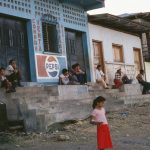In 1954, the Guatemalan military, managed by the United States, overthrew the reformist democratic government. With no legal restraints in place, soldiers and policemen killed and tortured tens of thousands of civilians in the name of anti-communism. In 1985, the military allowed the election of a civilian government, and the next year Christian Democrat Vinicio Cerezo Arevalo took office promising to end military impunity and build the foundations of democratic governance.
After the Human Rights Ombudsman reported in 1990 that each year hundreds of extra judicial executions and disappearances have occurred, with very few of these cases being investigated, PHR and Americas Watch arrived in Guatemala to survey the medical and scientific procedures that were used in the country’s death investigations. Their joint report, “Guatemala: Getting Away with Murder,” examined the conduct of investigations thatoccurred in political killings. The report found that death investigations could not be conducted properly, as doctors were not allowed to see a body in the field, were not allowed to run standard autopsy practices, and were pressured by police and the government to falsify autopsy reports.
PHR experts returned to Guatemala in 2010 to draw attention to other ongoing human rights violations, this time the health and environmental impacts of the Canadian-owned Marlin Mine in Western Guatemala. For one week, a group of multidisciplinary investigators assembled by PHR investigated allegations that mine workers and indigenous peoples living near the Marlin Mine were being exposed to toxic metals. A detailed explanation of these findings and PHR’s recommendations to the Guatemalan government can be found in the report “Toxic Metals and Indigenous Peoples Near the Marlin Mine in Western Guatemala: Potential Exposures and Impacts on Health.”





